In our previous blog article, “RCA Program Development: The Key Steps of Designing Your Program”, we provided a high-level outline of the eleven key elements that need to be defined in order to have an effective root cause analysis program in your organization. Now, in a series of articles, we’ll break down each of those eleven key elements into further detail expanding on the important considerations that need to be taken under account, starting here with your goals and your current status. 
- RCA Goals and Objective Alignment
So, the first question is, “What are we trying to achieve with the RCA effort?” The answer from an overarching perspective can be found in the organization’s goals and objectives. Every organization, and individual for that matter, has a set of goals and objectives that are used as yardsticks to measure both short and long term performance. It is critically important that the RCA effort be in complete alignment with the organization’s and individuals’ goals and objectives. We do this by using the goals and objectives to guide us in identifying the Key Performance Indicators (KPIs) of the RCA effort and setting the Threshold Criteria (Trigger Diagram) for determining when a formal RCA must be performed. (Learn more about setting Threshold Criteria.) If the alignment is true, then there will be tangible, measurable improvement in goals and objectives achievement over time.
- Status of Current RCA Effort
Every organization will have some form of RCA in practice whether it is formalized, or ad hoc. It is worthwhile spending some time assessing the status, or maturity level, of the existing RCA process. Maturity level can be categorized in one of four general categories.
- Level 1: Learning and Development
- Level 2: Efficient
- Level 3: Self-Actualizing
- Level 4: Pro-Active
Level 1, Learning and Development, is where most organizations without a formalized RCA program find themselves. Management recognizes a need for a formal problem solving method but the focus is primarily on training. There is little or no structure in place to support the trained facilitators and no well-defined KPIs or threshold criteria guidance. At this stage the organization will usually gain some organizational improvements from the elimination of problems, but in an inefficient "learn as you go" manner.
At Level 2, Efficient, formal RCA triggers and KPIs are in place and are aligned with business goals and objectives in advance of RCA training. This would include clear definitions of RCA roles and responsibilities as well as identification of supporting infrastructure such as RCA status tracking, effectiveness of implemented corrective actions and the like.
In the Self-Actualizing level, the effectiveness of the trained problem-solvers has matured through experience. Thus, their ability to solve organizational problems has resulted in a documented achievement of the program KPIs and resulting improvements to the organization’s goals and objectives. The organization is now in the continuous process of tightening the bandwidth of the KPIs to yield greater return to the bottom line. The RCA facilitators are now highly confident, efficient, and effective in eliminating impediments to achieving goals and objectives.
In the Pro-Active level, your organization has now integrated the RCA process into its core culture. Effective problem elimination is the norm and expected at all levels of the organization. People no longer look to place blame for problems but instead are focused on prevention and elimination. Return on investment for both monetary as well as health/safety/environmental issues is extremely high acting both as gratification and motivation. RCA has become a core competency within your culture whereby people are intolerant of ineffectively solving problems the first time and are finding pro-active ways to use RCA to prevent problems from occurring in the first place.
There are existing methods or surveys that can be used to determine an organization’s maturity level. Why is this important? Determining your current maturity level draws a line in the sand showing where you started, or took a renewed focus, in this journey of developing your RCA program. You can set goals around where you want to be over a period of time and look back to see how your program has actually evolved.
This article has given you a glimpse into the first two key elements but of course, there is more to setting up your RCA program for success. ARMS Reliability’s RCA experts can assist you with designing your complete RCA program or reinvigorating your current one. This of course includes assisting with determining the status of your current RCA effort and walking you through the process of establishing and aligning goals. Learn more about our recommended facilitated workshop and contact us for more information.
Stay tuned for the next article in this series.

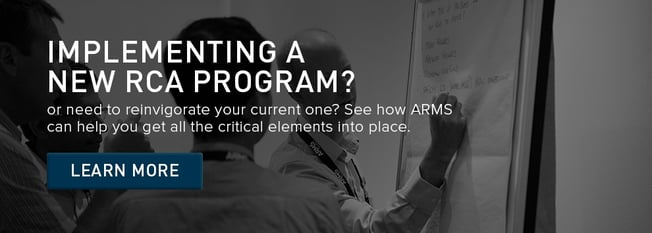

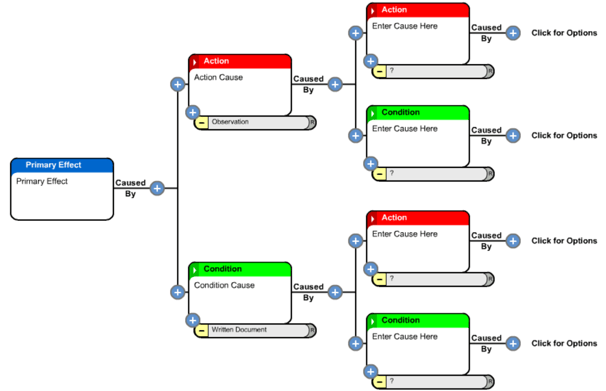
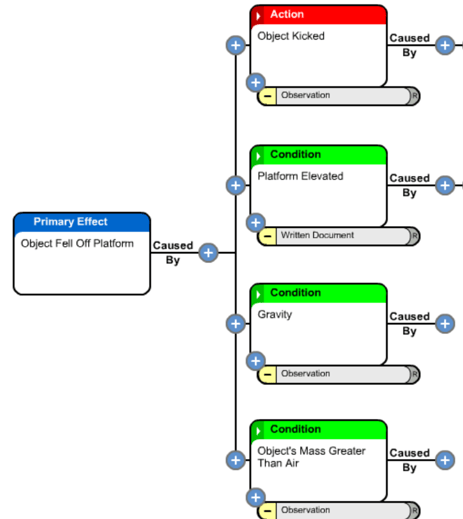



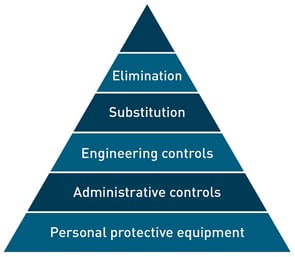 One colleague stated that another must understand this concept since he has an engineering background, and all engineers would know this. I had to inform them that I also have a 30-year background in engineering,
One colleague stated that another must understand this concept since he has an engineering background, and all engineers would know this. I had to inform them that I also have a 30-year background in engineering, 






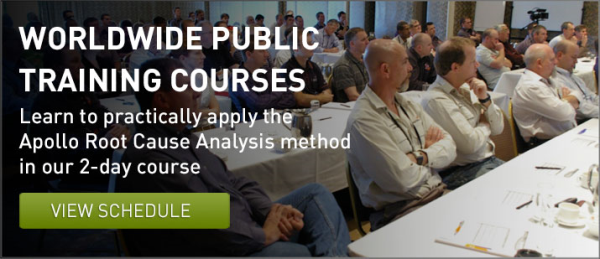


 By
By 
